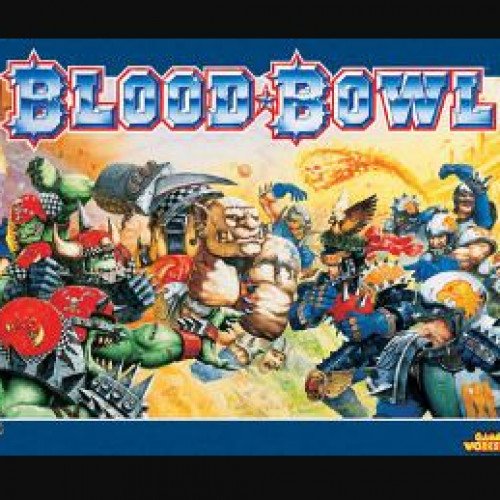BLOOD BOWL VS CHECKERS

BLOOD BOWL
Blood Bowl is a fantasy football game created by Jervis Johnson for the British games company Games Workshop as a parody of American Football. The game was first released in 1986 and has been re-released in new editions since. Blood Bowl is set in an alternate version of the Warhammer Fantasy setting, populated by traditional fantasy elements such as human warriors, goblins, dwarves, elves, orcs and trolls. In late 2016, Games Workshop released a new version of the game - the first in 22 years. It featured a double sided board and new plastic miniatures. In August 2020, Games Workshop announced the latest version of the game, titled Blood Bowl Second Season Edition, which features a significant overhaul of the rules. This version was released in November 2020 and included miniatures for two teams and referees, a board (pitch), templates and the rule book. The rule book was also available separately, both physically and digitally. Cyanide Studio confirmed that the next videogame adaptation, Blood Bowl 3, would use the new ruleset. Blood Bowl is a two-player, turn-based board game that typically uses 28 mm miniatures to represent a contest between two teams on a playing field. A board containing a grid overlay represents the field. Using dice, cards, and counters, the players attempt to score higher than each other by entering the opponent's end zone with a player who possesses the ball. The "Blood" in Blood Bowl is represented by the violent actions available to players. Game play is based on a hybrid of American Football and Rugby. Players may attempt to injure or maim the opposition in order to make scoring easier by reducing the number of enemy players on the field.
Statistics for this Xoptio

CHECKERS
Draughts (/drɑːfts, dræfts/; British English) or checkers (American English) is a group of strategy board games for two players which involve diagonal moves of uniform game pieces and mandatory captures by jumping over opponent pieces. Draughts developed from alquerque. The name 'draughts' derives from the verb to draw or to move, wheras 'checkers' derives from the checkered board which the game is played on. The most popular forms are English draughts, also called American checkers, played on an 8×8 checkerboard; Russian draughts, also played on an 8×8, and international draughts, played on a 10×10 board. There are many other variants played on 8×8 boards. Canadian checkers and Singaporean/Malaysian checkers (also locally known as dum) are played on a 12×12 board. English draughts was weakly solved in 2007 by a team of Canadian computer scientists led by Jonathan Schaeffer. From the standard starting position, both players can guarantee a draw with perfect play. Draughts is played by two opponents, on opposite sides of the gameboard. One player has the dark pieces; the other has the light pieces. Players alternate turns. A player may not move an opponent's piece. A move consists of moving a piece diagonally to an adjacent unoccupied square. If the adjacent square contains an opponent's piece, and the square immediately beyond it is vacant, the piece may be captured (and removed from the game) by jumping over it. Only the dark squares of the checkered board are used. A piece may move only diagonally into an unoccupied square. When presented, capturing is mandatory in most official rules, although some rule variations make capturing optional. In almost all variants, the player without pieces remaining, or who cannot move due to being blocked, loses the game.